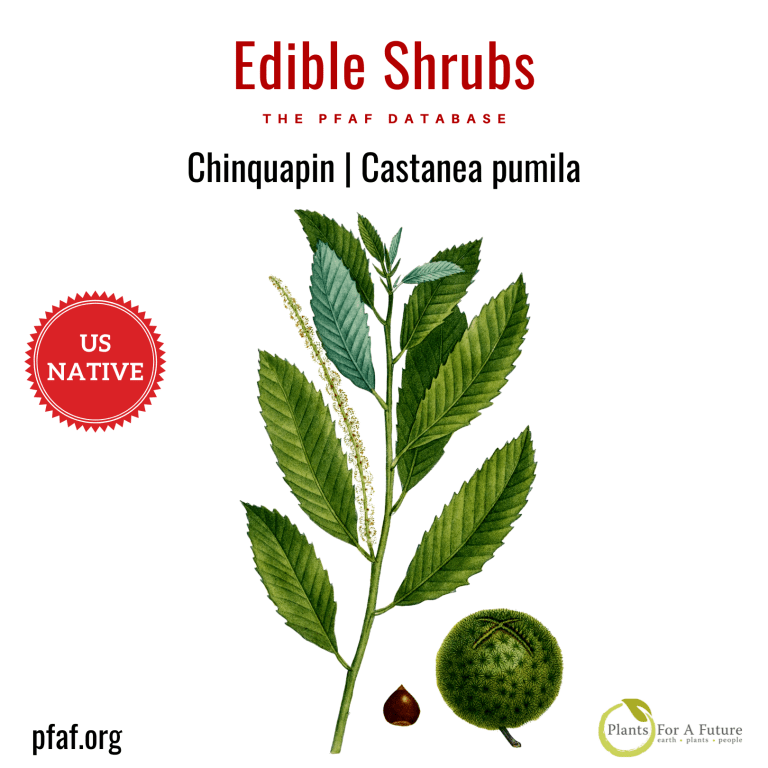Chinquapin is a spreading slow-growing shrub or small tree to 4m (12ft) closely related to the American chestnut, Castanea dentata. It is commonly known as the Allegheny chinquapin, American chinquapin or dwarf chestnut. Chinquapin has smaller leaves and fruit than other chestnuts.
Is Chinquapin edible?
The sweet, nutty flavoured seeds are very acceptable raw with a superior flavour to sweet chestnuts (C. sativa). They are harvested in late summer into autumn. The seeds become even more delicious and develop a floury texture when baked, making an excellent potato or cereal substitute. The seed is relatively small, about 2cm (1in) thick, and nearly half the size of C. dentata. Chinquapin seed is sold in local markets in America. The husks only contain one seed, rarely two, and 45% starch and 2.5% protein.
Medicinal uses of Chinquapin
Chinquapin leaves are antiperiodic, astringent and tonic. An infusion of the leaves has been used as an external wash for the feverish condition common to colds.
Other uses of Chinquapin
The bark, leaves, wood and seed husks all contain useful tannin. The wood is coarse-grained, hard, light, durable, and easy to split. It is too small for commercial use and occasionally used for fence posts, fuel etc. It weighs 37lb per cubic foot.
Growing Chinquapin
Chinquapin prefers a good, well-drained, slightly acid loam soil and can succeed in dry soils. Once established, it is very tolerant of drought and of highly acid, infertile, dry sands. It is averse to calcareous soils but succeeds on harder limestones. This species is an excellent soil-enriching understorey in pine forests, growing and fruiting well so long as the canopy of pines is relatively light. Although it is very winter-hardy, this species only really thrives in areas with hot summers. The young growth in spring, even on mature plants, is frost-tender, and so it is best to grow the plant in a position sheltered from the early morning sun. Chinquapin spreads widely using underground suckers. It is relatively self-sterile but hybridizes freely with other members of the genus. Fruits are produced in 2 to 3 years from seed.
Chinquapin does not like coastal salt conditions, but the sub-species C. pumila ashei is a coastal form from Virginia to Texas. Plants in this genus are notably resistant to honey fungus.
Propagating Chinquapin
Propagation is by seed or the division of suckers. The seed is sown as soon as ripe and must be protected from mice and squirrels. The seed has a short viability and must not be allowed to become dry. If it is kept moist, it can be stored for a few months in a cool place, such as the salad compartment of a fridge, but must be regularly checked for signs of germination. Suckers can be divided in winter and planted straight into their permanent positions.
See the PFAF database for more information on Chinquapin Castanea pumila







